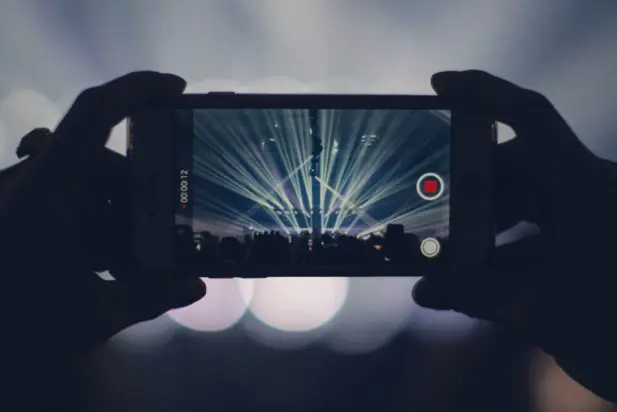This post was updated on April 2, 2020, to reflect changes to virtual event strategies during the COVID-19 pandemic.
The venue is set, the program is printed and tickets are sold out. Everything about your event feels ready—and yet, you have a sinking feeling that it could be doing more. After all, putting on a gala, awards ceremony or other big shindig for your nonprofit takes a lot of time and energy. You want to make the most if it. So what about streaming a video of the festivities online? Should you live stream events to boost the return on investment and engage more people?
Years ago, the idea to take on live streaming would have been ruled out by cost and technical difficulty. But with the ease of broadcasting on familiar platforms like YouTube, Facebook, Instagram and Twitter, it’s now a reasonable tool to add to your nonprofit’s marketing toolbox.
Of course, there could be another good reason to host a virtual event: a global pandemic. If you’re looking into how to live stream events because in-person gatherings are out of the question, jump to our related resources below. Most of this post focuses on strategies for in-person events that you’d like to broadcast online.
How to Decide If You Should Live Stream Events
Like any marketing or fundraising tactic, you need to know your audience in order to determine if live streaming is right for your nonprofit. The people you want to engage through a live stream have to be savvy enough to access your video feed so that they aren’t overwhelmed or frustrated by the experience. Beyond this point, your decision should come down to value—both to the viewer and to your organization. Because each event is different, it’s more than OK to decide to stream some events and not others.
To help you decide, here are 10 questions that your nonprofit should ask before deciding whether or not to live stream events:
Will your live stream offer any kind of special value or access for your remote supporters?
Events that include a celebrity guest, live music, or highly visual activity like a fashion show or even pet adoption area are great candidates for a live stream because of the potential to be surprised and inspired. If your live stream can offer a true experience, you’re on the right track.
Is there going to be an important announcement that will energize all of your supporters and not just attendees?
Events can be an ideal time to announce new initiatives and big milestones, making your guests feel like VIPs with exclusive access. Live streaming your event can spread that feel-good moment with more of your supporters without detracting from the in-person experience.
Are you active on social media platforms that make live streaming easy?
If you already have a following on Facebook, Instagram or Twitter, creating a live stream for a large public audience is already at your fingertips. Live streaming in places where you already engage with the community is also a nice way to meet people where they are, using technology that they know.
Will a recording of the live stream be useful for other purposes?
Content marketers are all about repurposing content! Would your event participants enjoy the opportunity to watch and share your video after the event is over? Does it make sense to post it on your blog or repost it on social media for people in a different time zone? A live stream can have extra value if there are ways to put it to work beyond the event.
Will your event attendees mind?
If you cringe at the thought of telling your guests that they might end up on camera, or have attendees who take issue with granting permission to be filmed, live streaming becomes extra challenging. That said, there are ways to live stream in ways that only show the faces of people like presenters and speakers, reducing potential conflict. You could also weave in a disclaimer into your event registration materials, using language like this from Convoy of Hope.
Do you want to be able to fundraise from the live stream audience?
Some options like Facebook Live and YouTube make it easy to accept donations from people watching the stream. You could also use the live stream to promote the event’s text-to-give campaign. If you have capacity to monitor and celebrate donations in real time, live streaming also gives you a chance to acknowledge supports immediately.
Could you achieve the same results with another tool?
There are many ways to capture events in the moment, like posting photos via Instagram or Snapchat. If the live stream of your event offers the same value as a photo gallery or written transcript of a speech—i.e. there isn’t opportunity for interaction—you might take another route. Using social media and email to share a pre-recorded announcement or special access to a video that you’re showing at the event could be a good alternative.
Do you have a point person?
From lighting, sound and tripods to WiFi or cell phone coverage, there’s definitely some testing involved before deciding to live stream events. Whether it’s a staff person, volunteer or a vendor, a live stream needs people power before and during the show. And if you’re moderating the video feed, like asking and answering questions, you probably need more than one person to handle the technology and engagement.
How will you avoid the boring parts?
There are going to be many parts of an event that don’t work for a live stream audience. Cocktail hour, silent auctions, dinner time and hitting the dance floor aren’t great moments for someone at home. Additionally, if the ticket price of your event is cost-prohibitive for many of your supporters and constituents, you’ll need to be extra careful about making people feel like they aren’t a part of the joy of being involved with your cause. If there’s only one part of the evening that offers value to the at-home crowd, focus your energy there.
Will you be able to promote the event AND the live stream?
Event planning tends to be a full staff effort. Adding a live stream component to your big night could be too much this time around if splitting focus from ticket sales could hurt the success of the event. Some organizations, such as Louisiana Rising, include the when, where, how and why of the live stream on the event page on their website. This approach offers a nice, secondary call to action for someone who decides they can’t make it in person after seeing the date or cost.

Switching to a Completely Virtual Event
Since we originally published this post, a lot has changed when it comes to live streaming nonprofit events. The COVID-19 pandemic has forced many organizations to cancel galas, fundraisers and award ceremonies, while others are looking for ways to turn in-person gatherings to virtual events. If your nonprofit is struggling to find a way to take your event fully online, here are some resources we recommend:
- From In-Person to Virtual: How to Maximize Your Fundraising Event Revenue
- Tips for a Successful Virtual Gala Experience
- Five Ways to Pivot When Your Marquee Event is Canceled
- 5 Strategies for Nonprofits Navigating Event Cancellations due to Coronavirus
- How to Change a Physical Event to a Virtual Conference
Just because technology makes something easy doesn’t mean it’s right for your organization. Live video is poised to play a big role in online marketing, and there are lots of ways for nonprofits to use it to build engagement and show your impact. To help decide if you should live stream events for your cause, pay special attention to your audience’s needs and the value that video would offer them in addition to your staff capacity and know-how.
Have you tuned in to a live stream of an event? What kept you watching or made you turn it off? Let’s chat more about best practices in the comments.

Absolutely! Make sure it’s broadcast from Hawaii or Guadalupe, so people can see you living large on their charitable donations!
Hi John – It sounds like you’ve seen some nonprofits put on events are out of scope for their budget or mission. Luckily that doesn’t seem to be the case with a lot of organizations out there. Any thoughts on how charities should talk about how they fund events? What would you want to know?
Some truth to your statement, however as many non-profit events are funded via corporate sponsors, such sponsors may find livestreaming a plus. For example if properly organized, livestreaming can: (i) provide corporate sponsors an option to pay for brand promos at specific intervals during the event, increasing their reach outside of only those in attendance, (ii) afford donors and volunteers an opportunity to see a wonderfully organized and enjoyable event which in turn could spark their interest in attending next time around, (iii) engage non-attending donors and supporters during the event, e.g. they could partake in the live auctions, etc. and, (iv) in the minimum, increase awareness of the non-profit and its particular event.
It really can be a win-win if properly organized. As one who has organized many non-profit events, I see event livestreaming taking off (but with much careful planning in order to accomplish specific goals) as a useful promotional tool and a new way to generate further event income.
Hi Ericka – Thanks for weighing in here. You make a great point about live streams being a potential benefit to event sponsors, who might get additional visibility out of it. And I definitely agree that careful planning (including setting clear expectations) is key!
I’m early in the researching of costs & protocols for a live stream of our non-profit choral group’s concert next season. Does anyone have experience with that? I would benefit from ideas on professional/industries to contact. I don’t even know what questions to ask:))
We’re about 45 members strong, usually perform with just piano accompaniment for 1 – 1/2 hours. We’re in the Midwest and our venues are typically a church or university hall/auditorium. We have a website, have some social media presence on FB & Twitter. And, like all non-profits, money is an issue!
Hi Mary,
Thanks for taking the time to reach out. Compared to other types of nonprofit events or presentations, it seems that one of the main considerations (and potential costs) for a concert live stream will be audio quality. Working with a professional rather than relying on a phone that’s streaming to Facebook could be a better approach, especially if you’d like the recording to be nice enough to share or embed on your website after a concert.
If you haven’t already, you might consider reaching out to a few of the potential churches and halls to see if they have any capacity for audio/visual support, either within their organization or through vendors that they’ve worked with on past events. Live streaming church services seems to be increasingly common and they might have some technology already in place. For example, one of our clients, the Oblates of the Virgin Mary, stream a daily mass to Facebook using Wirecast software to give it a more professional look and feel.
For anyone else that reads Mary’s comment and has some advice or tips, please feel free to weigh in.
Best wishes for your upcoming concert season!
Katy
Hi Mary, I’m looking into not-for-profits live streaming events. How did this go? Was it a success? Are you going to do it again?
Hi Katrina! Thanks for following up.
Our group is waiting to hear on funding from a local source before we commit to the project. Audio specialists from the University where we will perform next Spring are willing to handle this for us. Sorry I have no more to report at this time. Be well! Mary